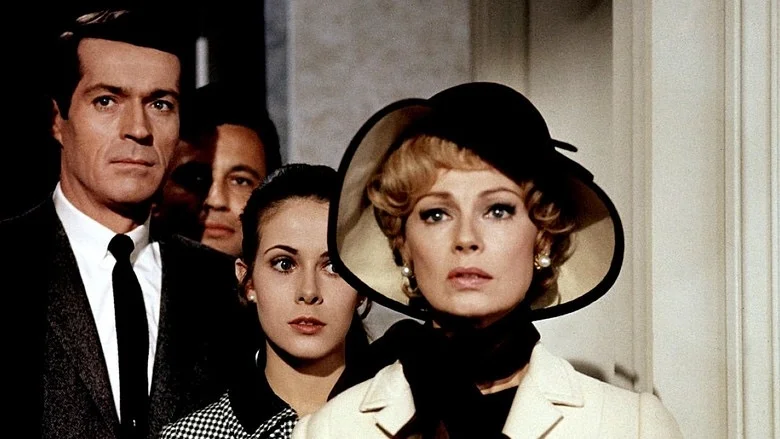Beginner’s Guide to Alfred Hitchcock: Waltzes from Vienna (1934)
I love musicals, and I love Alfred Hitchcock. But never the twain shall meet, right? I was surprised as anybody to find out that Alfred Hitchcock directed a musical during his British era. Waltzes from Vienna, a loose biopic of Johann Strauss I and Johann Strauss II, is an “operetta film”, a type of musical that was created in Germany in the 1920’s. The trend spread to England and during the 1930’s, they were massively popular. Operetta films were largely based on operas. Hitchcock’s film, also known as Strauss’ Great Waltz, was based on Walzer aus Wien (“Waltzes from Vienna”), an opera which was adapted into a Broadway musical. With music by Strauss II, the opera and musical were both popular at the time. Hitchcock, however, discarded most of the musical numbers, keeping just a few major musical motifs.
Hitchcock’s film stars Esmond Knight as Johann Strauss the younger aka Schani. He is in love with Resi (Jessie Matthews) and dedicates his latest composition to her. The Countess Helga von Stahl (Fay Compton) is also attracted to Schani for his music, and commissions a song from him, suggesting that he use some of her poetry. Resi becomes suspicious that the Countess has romantic intentions for Schani. Resi herself wants Schani to leave music and marry her, and eventually take over her father’s bakery. Meanwhile, Schani is starting to compose what would become the “The Blue Danube Waltz,” and he argues with his father Strauss the elder (Edmund Gwenn) over his career.
The plot is a rather typical opera/musical plot, with miscommunications, romantic entanglements, clashes between generations, and the like. I rather enjoyed Waltzes from Vienna as a brisk, pleasant romantic musical. The film has a rather loopy opening sequence with a fire at the bakery with Resi and Schani in love upstairs oblivious to the danger. The film starts with an incongruous image of the fire brigade’s horses in tight close-up, somewhat disorienting the viewer. Then Schani and another one of Resi’s admirers, Leopold (Hindle Edgar) fight over who will rescue Resi. It’s a zany start for a film that balances comedy and drama rather well.
The film is rather engaging as a musical about an artist being pulled between comfortable domesticity and the thrill of artistic creation. One scene has Schani learning about the bakery, but hearing music in everything (like croissants being dropped in a box sounding like rhythms in a symphony). It’s an early scene of Hitchcock creating visual metaphors to bring his audience inside the character’s mind.
Music would become even more important to Hitchcock later in his career, but you can see the foundation for that being built in Waltzes from Vienna. The film centers on “The Blue Danube Waltz,” one of the most famous waltzes in history. Cinephiles likely know the waltz from its iconic use in Stanley Kubrick’s 2001: A Space Odyssey. Waltzes, in general, went on to become one of Hitchcock’s favorite styles of music. He features waltzes in a few of his films ranging from The Lodger: A Story of the London Fog to Torn Curtain to Strangers on a Train. Film scholar David Schroeder pointed out that the waltz is usually utilized to score a suspenseful scene. Contrasting a sweeping, dreamy waltz with danger is especially resonant in Shadow of a Doubt, which features “The Merry Widow Waltz” as a leitmotif for a serial killer. In his book Hitchcock’s Ear: Music and the Director’s Art, Schroeder connects Waltzes from Vienna with Rear Window, another film in which a composer writes music as a running theme in the film.
Hitchcock himself confessed that this film was a low point in his career. In his interview with Francois Truffaut, he said that he was contracted to do Waltzes from Vienna. And sure, this movie doesn’t do much to sharpen his talents. While Alfred Hitchcock may not have found value in Waltzes from Vienna, I found it to be rather enjoyable. It features an appealing leading man, some beautiful music, and a handful of imaginatively filmed scenes.












